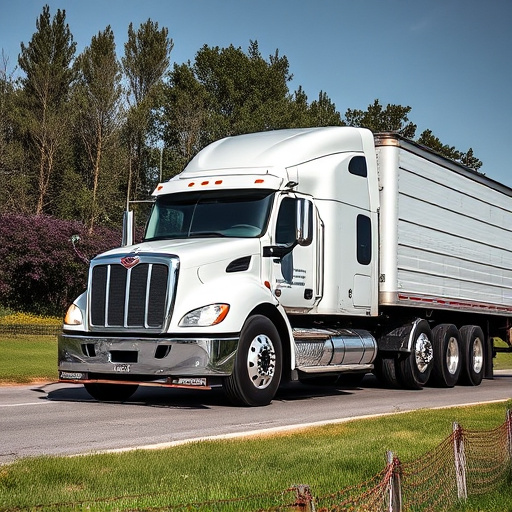Competitive pricing is a crucial strategy for both e-commerce and physical retail, aiming to attract customers and maintain market relevance. E-commerce benefits from global market reach and eliminated overheads, allowing dynamic pricing adjustments based on demand and international competition. Brick-and-mortar stores combat this by leveraging brand reputation, promotions, and dynamic pricing, balancing profit margins with appealing in-store experiences. Despite these tactics, the rise of e-commerce challenges traditional retailers to offer competitive pricing models while maintaining customer satisfaction.
In the dynamic realm of retail, understanding competitive pricing is paramount for success, whether operating an e-commerce platform or a traditional brick-and-mortar store. This article delves into the strategic intricacies of setting prices across these distinct sales channels. We explore how e-commerce pricing dynamics offer advantages like cost transparency and global reach, while presenting challenges such as price comparison tools and customer expectations. In contrast, brick-and-mortar retailers employ unique tactics, considering factors like overhead costs and in-store experiences. By understanding these strategies, businesses can craft effective competitive pricing models to thrive in today’s market.
- Understanding Competitive Pricing Strategies
- E-Commerce Pricing Dynamics: Advantages and Challenges
- Brick-and-Mortar Retail: Pricing Tactics and Considerations
Understanding Competitive Pricing Strategies

Competitive pricing is a critical aspect of both e-commerce and brick-and-mortar retail strategies, as it plays a pivotal role in attracting customers and staying relevant in the market. For online stores, understanding the vast competition and diverse shopping options available to consumers requires a dynamic approach. This involves regularly analyzing competitors’ prices, identifying trends, and adjusting pricing strategies accordingly. By offering competitive rates for products like vinyl wraps or high-quality finishes, e-commerce businesses can boost their appeal and drive sales.
In physical stores, while the immediate comparison of prices with online rivals is not always feasible, retailers must still employ clever tactics. Implementing dynamic pricing based on demand, seasonal trends, or even personalized offers can help maintain a competitive edge. For instance, offering discounts on ceramic coatings during off-peak seasons or providing exclusive deals to loyal customers creates a sense of urgency and fosters customer loyalty, ensuring the store stays top of mind when it comes to essential high-quality finishes.
E-Commerce Pricing Dynamics: Advantages and Challenges

E-commerce pricing dynamics offer a unique set of advantages and challenges when it comes to competitive pricing. One significant advantage is the ability to reach a global market, allowing businesses to compare prices with competitors internationally. This transparency fosters a data-driven approach where retailers can adjust their strategies swiftly to match or undercut rivals. Additionally, online platforms often eliminate the overheads associated with physical stores, enabling them to offer high-quality finishes and services at more competitive prices.
However, challenges arise due to the diverse nature of e-commerce. Online retailers must carefully consider pricing strategies to balance profit margins while remaining attractive to price-conscious consumers. Dynamic pricing, where costs fluctuate based on demand, is a strategy employed by many e-commerce platforms, especially for specialized products like automotive detailing or ceramic window tinting. While this method can maximize revenue, it requires meticulous monitoring to ensure prices remain fair and competitive, particularly during peak seasons or sales events.
Brick-and-Mortar Retail: Pricing Tactics and Considerations

Brick-and-Mortar retail stores have traditionally relied on several pricing tactics to attract and retain customers. One common approach is to offer a perceived value through brand reputation, exclusivity, or the experience of shopping in-store. These stores often employ strategies like markup pricing, where products are priced higher than their cost to account for overhead costs and perceived luxury or demand.
Another consideration for physical retailers is the ability to offer promotions, discounts, and loyalty programs. These tactics can be powerful tools to drive sales and encourage repeat purchases. For instance, premium automotive services or specialized custom graphics stores may use dynamic pricing based on seasonal trends or limited-time offers to create a sense of urgency among customers. Effective pricing strategies in brick-and-mortar settings require a delicate balance between maintaining profit margins and ensuring customer satisfaction, especially when competing with the convenience and transparency of online shopping and its associated heat rejection through competitive pricing models.
In the competitive landscape of retail, understanding pricing strategies is key. E-commerce offers unique advantages like lower operational costs, allowing for more flexible and dynamic competitive pricing. Brick-and-mortar stores, on the other hand, must navigate traditional pricing tactics while considering overhead expenses. By analyzing market trends, customer behavior, and competitor moves, businesses can optimize their pricing strategies to stay ahead in the ever-evolving retail environment, ensuring they offer competitive prices that drive sales and maintain profitability.














